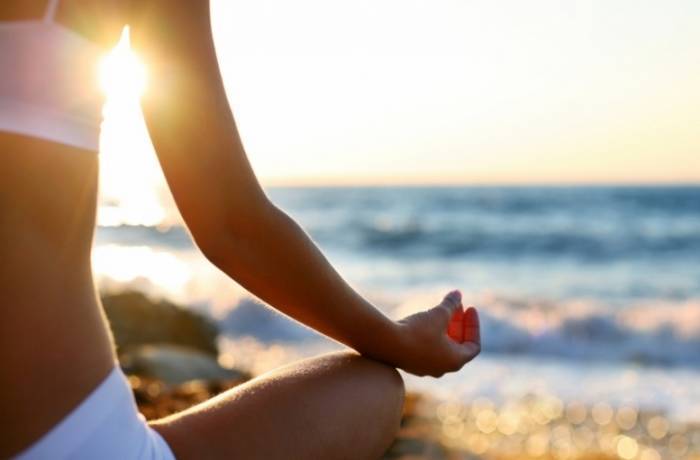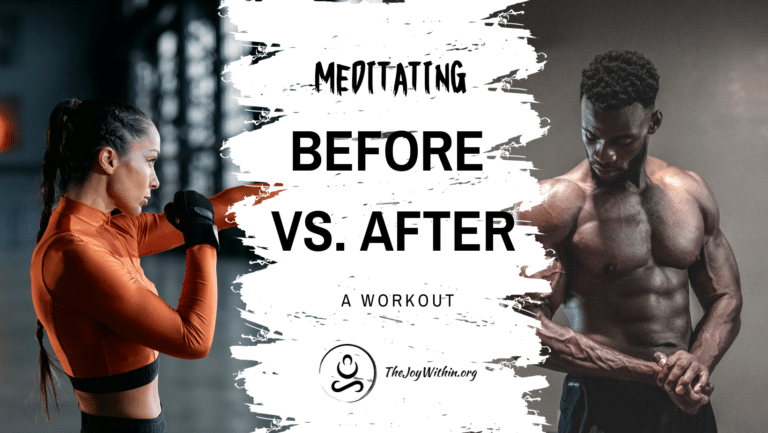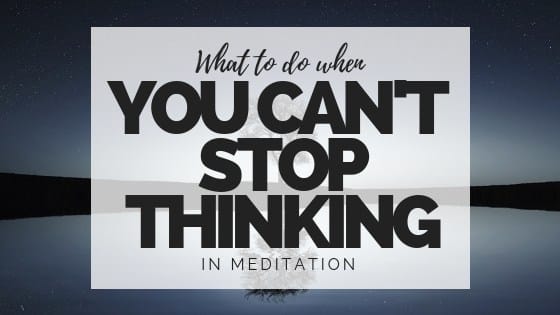How To Do Meditation At Home: 3 Steps To Meditate Effectively

If you’re just getting started with meditation, at first the process can seem hard, overwhelming, and even confusing. There are a lot of common misconceptions about what meditation is and what it takes in order for you to be successful with your practice.
So, what’s the secret? How do you meditate properly? In this post I’ll lay out a few easy steps you can follow in order to make the most of your time on the mat, and ensure you know how to meditate effectively and easily.
Prepare a Quiet Space
While I don’t like to lay out a long list of hard and fast rules you need to follow in order to have a good meditation practice, I do believe that one of the most essential points is to make sure you prepare a quiet space in your home to sit comfortably.
Before you meditate, make sure you set aside a period of time in which you will not be disturbed. It doesn’t matter whether you have 5 minutes or an hour, make sure there are no distractions:
- Turn off your phone. Silence all messages and place your phone out of reach.
- Silence any appliances. It’s best not to meditate while the dishwasher or laundry machine is running.
- Try to be in your own personal space, or tell your partner/children/housemates not to disturb you.
- Choose Relaxing Music. If you want to listen to music, make sure it is soft, flowing, and easy.
- Minimize any other disturbances. Try to prevent other foreseeable interruptions and disturbances before you begin your practice. For example, you may want to place pets in a different room.
If you’re trying to build a meditation routine, it helps if you can use the same space to meditate each time you sit down to do so. This creates an mental association that when you come to this space, you’re going to relax your mind and allow higher states of energy to flow through you.
If you’re just starting out, you may not understand how creating this safe-space aids the meditation, but simply trust that it does, in fact, have a major impact on whether or not you’ll be able to relax comfortably.
Choosing The Best Posture: How To Sit
The next choice for you to make is to decide on the best meditation posture for you. Traditionally, many people have an idea that meditation has to be done while sitting on the floor or sitting in lotus position. This is not necessarily case.
It is far more important to make sure you are in a position in which you can sit comfortably for the entirety of your meditation, than to try to force yourself into an uncomfortable position just because you think you’re supposed to.
There are a few common meditation postures for beginners:
- Lying down. The easiest posture for most people to take is to lie down on a couch or bed. If you have trouble relaxing, then this can be a great posture for you to try, but in my opinion it is not the best option for most people. When you are lying down, you may trigger your brain to sleep. While this feels relaxing, it actually misses the point of meditation. You want to be able to find a calm place of relaxation, before you get to the point of falling asleep. This means that sitting upright is usually the better way to go.
- Sitting in a chair. Most meditation positions revolve around maintaining an erect spine. Sitting in a chair is a good posture for beginners or for anyone with chronic back or joint problems. If you can, sit straight on the edge of the chair, rather than slumped at the back of it. Plant your feet firmly on the ground, to allow the energy of the Earth to flow up your spine. Sitting in this way is comfortable for most people, and a great way to build your routine.
- Sitting on a cushion or meditation stool. Another great option is to use a meditation cushion or stool in order to help your posture. Personally, I still use a cushion every time I meditate, and I’ve been practicing for over 10 years! Using a prop helps you to keep your spine up and aligned over your hips, with your knees lowered. This alignment allows the breath to flow freely, in a way that causes less stress on your knee and hip joints.
- Sitting cross-legged on the floor. Lastly, if your are fairly flexible, you may wish to sit cross-legged on the floor. I only encourage you to use this posture if you can sit comfortably with your spine erect. If your spine starts to slump, use a cushion to prop yourself a little higher, or sit in a chair. If this posture is new to you, you may want to practice sitting for short periods first. Experiment with doing a 5 minute meditation while cross-legged
If you choose to sit on a cushion, stool, or on a mat on the floor, you may want to consider practicing your seated posture for short increments at first. Try sitting cross-legged for a 5 minute meditation to start, and then gradually increase the time you spend in that position. There’s nothing worse than having to stop in the middle of a good meditation because your posture became excruciatingly painful!

Easy Meditation Techniques: 3 Methods
Once you’ve prepared your space and have decided how to sit, the final step is to choose which technique you want to use. There are almost as many different meditation methods as there are people meditation, so, again, remember there is no one “ultimate” choice.
Here are three easy meditation methods for beginning and intermediate students.
- Focus on the Breath. The breath is easily the best place to begin your meditation practice. Simply drawing your attention to your breath instantly begins to slow it down and create longer, more purposeful cycles of air. For a great beginning breath meditation, simply repeat the following idea silently to yourself: “Now, I am breathing in. [Pause]. Now I am breathing out.” You might also want to check out our free course on getting started with the breath.
- Repeat a Mantra. While you can study mantras for years before you master them, at their core the idea is quite simple. Choose a word or phrase you want to repeat to yourself during your meditation. By constantly repeating this phrase, you allow your mind to settle into a routine, and this prevents you from thinking extraneous thoughts. Some popular mantras include the so-hum mantra, ajai-alai, or simply the sound of om. As you repeat the phrase, you tap into the energy of that idea, and allow your mind to relax more deeply than it otherwise would. You can read more about mantras here.
- Use a Guided Recording. Lastly, guided meditations are an incredible resource for the budding practitioner. While it may take a few tries to find a voice and recording style that you really like, working with guided recordings help you to relax and focus more easily. Done correctly, these recordings give your mind just enough to focus on so you stop focusing on the random thoughts that normally run through your head. They can also lull you through a specific sequence, physically altering your brain-wave patterns and causing you to have a more effective practice.
Key Points To Remember: How To Meditate Correctly
At the end of the day, remember that there is no single “right” or “wrong” way to meditate. There are many different schools of meditation, and each has its own processes and lists of dos and don’ts. Some practices are ancient, some emerged recently from cutting edge studies on mindfulness and neuroscience. Some practices are strict, others playful.
The key is to experiment and to find the system that works best for you. I always tell my students that they shouldn’t worry about what they think they should be doing. Only think about what resonates – what feels right – to you.
Chances are, you’ll experiment with some meditation techniques that will be absolutely horrible for you, and you won’t be able to concentrate. Other times, you’ll find that you can easily get into the zone and relax into a heightened state of awareness.
As you gain experience, you’ll be able to take the exercises and methods that work for you and apply them as you choose. Discard anything that feels uncomfortable, painful, or stringent. I believe firmly that meditation should be fun and easy, at all times. If you enjoy the process, you’ll be more likely to meditate more frequently, and you’ll build the experience and knowledge to meditate properly, on your own terms.
That’s the secret to effective meditation.



